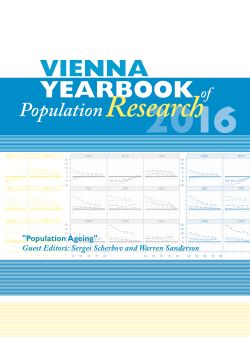
Vienna Yearbook of Population Research 2016, pp. 067-88, 2024/12/12
Special issue on “Population ageing”

This paper contributes to our understanding of the demographic developments and the transition to older age structures in the sparsely populated Arctic region: in Iceland and in the two Danish autonomous territories of the Faroe Islands and Greenland.We compare the population ageing dynamics of the region with those of mainland Denmark for the 1980–2015 period.We also examine whether population ageing has been developing differently in the communities of the North than in Denmark, and shed light on the question of whether a regionally specific policy approach to population ageing is required. In our study, ageing is measured by applying a dual methodology. The two sets of indicators are based on calculations of “chronological” and “prospective” ages. The latter is an innovative approach developed by Sanderson and Scherbov (2008) that considers improvements in life expectancy over time. Our results show that the size of the North Atlantic region’s older population is well below the Danish national average. According to chronological indicators, the ageing rates have been rising in recent years. Prospective indicators, which take into account changes in population longevity, also provide information about competing trends in population rejuvenation. In addition, the prospective approach reveals a cross-territorial convergence in recent decades, as well as a slower pace of ageing that can be accounted for in policy planning.
Keywords: Demography; Aging; North Atlantic Region; Arctic